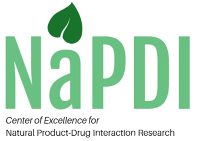Selection of cinnamon as a high-priority natural product
A comprehensive literature search conducted by the Pharmacology Core, combined with compelling published in vitro data, identified cytochrome P450 (CYP) 2A6 as a high priority target for pharmacokinetic cinnamon-drug interactions. That is, the abundant phytoconstituent cinnamaldehyde, a phenylpropanoid that emanates the flavor and scent of cinnamon, inhibited CYP2A6 activity in a time-dependent manner. Although the list of clinically relevant CYP2A6 substrates is very short, two critical substrates include nicotine and the anti-cancer drug letrozole.
Sourcing appropriate cinnamon products
The Analytical Core used metabolomics and biochemometrics approaches to prioritize candidate cinnamon products to study as precipitants of a CYP2A6-mediated cinnamon-drug interaction in humans. A single cinnamon product was selected from >80 commercially available products based on the combination of metabolomics and biochemometric data and practical considerations, including sales, availability of single lots, and shelf-life. Several species of cinnamon were compared based on product concentrations of phytoconstituents of interest, including cinnamaldehyde and coumarin, a known hepatotoxin. The chosen product (derived from Cinnamomum verum) contained appreciable cinnamaldehyde, yet concentrations of coumarin were well below the tolerable daily intake of 0.1 mg/kg when administered in accordance with planned clinical study procedures (see below).
Mechanistic in vitro evaluation
The clinically relevant CYP2A6 substrates, nicotine and letrozole, were chosen as object drugs to assess the potential for pharmacokinetic cinnamon-drug interactions. Time-dependent inhibition kinetic parameters of cinnamaldehyde for the metabolism of both drugs were determined using human liver microsomes. Results were applied to an established mechanistic static model to predict the change in the area under the concentration vs. time curve (AUC) of each drug. An increase in AUC of 4- to 5-fold for both drugs was predicted.
Clinical study design
The Pharmacology Core is currently conducting a clinical study to evaluate the effects of the chosen cinnamon product on the pharmacokinetics of nicotine and letrozole (NCT05157672). This 5-arm study will enroll 16 healthy adults (8 males, 8 females). The objective of Arm 1, which will include 6 participants, is to characterize the pharmacokinetics of key phytoconstituents in the cinnamon product. The objective of Arms 2-5, which will include 16 participants, is to assess the drug interaction potential of the cinnamon product using nicotine and letrozole as the object drugs.
Data reporting
The data generated by the NaPDI Center describing the clinical pharmacokinetic cinnamon-nicotine and -letrozole interactions will be uploaded to the database using standard operating procedures developed by the Informatics Core.
